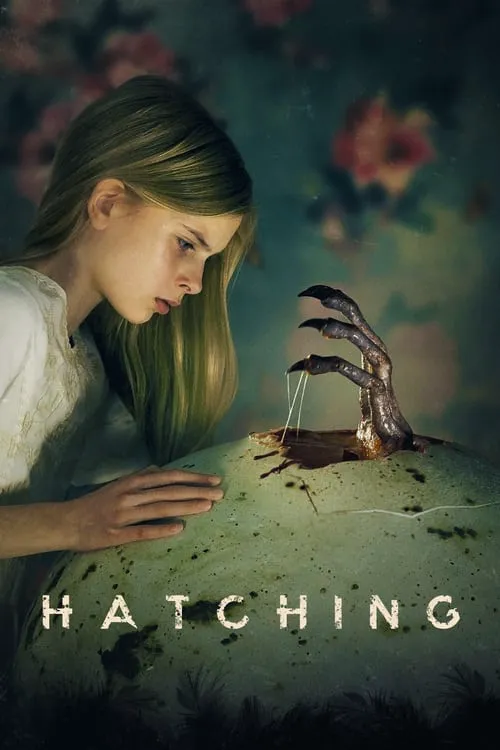Hatching

Plot
In the quiet town of Puumala in Finland, 12-year-old Tinja struggles to make her family appear perfect to her mother. Tinja's mother, despite being cold and often dismissive, wants Tinja to grow up with a refined and elegant upbringing. However, this facade hides the family's actual difficulties. On Tinja's birthday, her mother reminds her that their perfect image is fragile and must be maintained at all costs. One evening, while rummaging through the attic in search of something interesting to celebrate her 12th birthday, Tinja stumbles upon an old birdcage. Intrigued, she decides to take a chance and opens the cage. Her fingers brush against an unusual egg nestled in the cage. She finds it hidden in the wooden box and decides to take it home. Back in her bedroom, Tinja's mother is displeased with her daughter's choice, seeing the mysterious egg as a potential threat to their image. Despite her disapproval, Tinja decides to continue studying the egg. She spends more time in her room and eventually observes it for weeks without any result. Meanwhile, tensions within Tinja's family are escalating. Her mother, obsessed with social standing and maintaining a picture-perfect family, is starting to lose her grip on reality. Her husband is distant, working hard to keep the family's financial troubles at bay while also supporting his wife's unrealistic expectations. The pressures weigh heavily on Tinja as she feels her family is slowly falling apart. As the days pass, Tinja is more and more drawn to the mysterious egg. She begins to care for it by keeping it in the attic and feeding it small portions of water and food. Eventually, the egg starts to show signs of life. After an agonizing wait, the egg finally hatches into an egg-like creature that resembles a being from a different realm. Initially, Tinja sees the being as her ticket to freedom, an escape from the monotony and pressure of her household. The creature's arrival also allows her to form connections with those around her, who feel trapped under the weight of societal expectations. However, this peculiar being, referred to as "The Thing" or "Tinga," seems to have its own agenda and soon begins to wreak havoc in Tinja's household. As tensions rise, Tinga grows closer to Tinja and seems to understand her deep-seated desires and fears. This unsettling relationship raises questions about the nature of the creature and what exactly it's capable of. Tinja discovers Tinga is not like a typical pet, and its presence in her life forces her to make a choice between conformity and individuality. Tinja begins to rebel against the expectations placed upon her by her mother, allowing herself to indulge in the simple pleasures of life like playing with Tinga. This newfound freedom sparks hope in Tinja, who realizes that it's possible to live life on her own terms without conforming to societal norms. She comes to see herself and her family not as the perfect picture but as individuals with unique struggles. In the end, Tinga's presence sets an example of freedom and self-expression for Tinja and her household. It encourages them to explore unconventional means to find happiness and a sense of belonging. The movie is a poignant portrayal of the fragility of societal expectations and the strength that comes with embracing oneself.
Reviews
Recommendations




